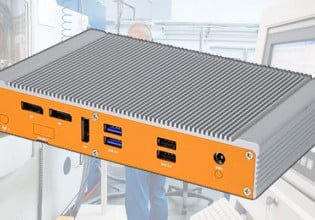Motor Control Expanded: Rockwell Automation Announces Product Upgrades
Motor control is accomplished by circuit devices from simple contactors to complex frequency drive systems. Rockwell Automation recently added a host of new features and upgrades to common product lines.
Here at Control.com, we have a saying: if it moves, lights up, or makes noise, we love it! Automation is all about mechanizing the world with greater efficiency and higher degrees of safety, all with the goal of reducing costs and footprint in an environment that is better for human operators and equipment.
Some automation equipment is highly digitized, ready to be integrated with advanced process controllers and cloud data dashboards. But the other end of the spectrum—those devices that perform simple, rugged, yet critical operations on a plant floor—are highly demanded by engineers.
Rockwell Automation, the owner of the familiar Allen-Bradley product lines of motor control, recently announced a full upgrade of branch and motor control products.
Circuit Breakers
Rockwell Automation has announced upgraded short-circuit current protection for the 140MT line of circuit breakers.

Rockwell Automation’s upgraded 140MT along with the 140MP line of circuit breakers. Image (modified) used courtesy of Rockwell Automation
Every circuit, residential or industrial, must respond to abnormally high current levels to protect the branch devices. Circuit breakers are rated for three different current level ranges:
- Standard operating current is the level considered ‘normal’ for a branch or a load device. This may be momentarily higher than the standard full-load current of a motor, and therefore, circuit breakers will be listed with a certain ‘curve’ that allows higher startup current conditions for various loads.
- The overcurrent trip level goes along with the normal current. This is a (usually adjustable) setpoint defining the sustained current level that will cause the breaker to trip and become open. Once again, the breaker curve determines the level and time at which excess current may be permitted.
- Short-circuit current is the rating for which the device will survive when subjected to a total failure (short circuit) of the load or branch wiring. Overcurrent may happen when a motor is overloaded, but total short circuit failure leads to significantly higher current.
Rockwell’s revised 140MT product line protects up to 50 or 30 kA of short circuit current for 600 V installations (specifically 50 kA for the catalog devices up to 1.6 A trip current and 30 kA for all devices above 1.6 A trip current).
The product line is also rated for up to 65 kA in 480 V installations for all but the 10-16 A rated model.
Motor Starting Contactors
Contactors act similarly to large relays with primary and auxiliary contacts, all designed into a form factor that supports partnering with overload protection.
Rockwell’s bulletin 100-E contactors provide starting ability for large motors while simultaneously reducing the energy required to activate the coil. This results in greater operating efficiency (reduced cost) and less thermal energy (longer life), both of which are excellent benefits.

Rockwell Automation’s upgraded 100-E motor contactor series is designed for small to large motor applications. Image used courtesy of Rockwell Automation
Another benefit of the bulletin 100-E contactor line is an optional integrated PLC driver interface. Typically, a PLC cannot source the current required for a contactor, and a user-supplied relay must be installed. In this product series, the combination of a smaller required coil current and a PLC interface module allows direct connections, reducing installation time and failure point risk.
Overload Protectors
Along with the contactor and the circuit breaker, special motor overload (OL) relays are often found in partnership with the contactor. This can allow a single circuit breaker to control several motors since the OL relay provides custom protection for each motor.

Rockwell Automation’s E300 offers built-in EtherNet/IP and DeviceNet control for network monitoring and control. Image (modified) used courtesy of Rockwell Automation
Rockwell’s upgraded line of OL protection, with the E100/200/300 product lines, not only provides exceptional protection performance but offers a few features that may not always be found in simpler overload devices:
- Selectable trip classes, because much like the circuit breakers, these OLs must allow higher current during startup, but this changes based on load application.
- Remote current sensing by means of current transformers can allow placement in locations other than in-line with the contactor.
- For some programmable models, current sensing data as a function of motor FLA, balance between phases, and undercurrent conditions can be transmitted over EtherNet/IP and DeviceNet networks and integrated into the Logix programming environment.
Motor Control Product Digitization
There is always a temptation to expand to a more capable system when replacing motion products, especially with the continuously decreasing cost of digital devices. However, it can always be argued that simple systems pose the lowest risk, and if a complex networked system is not required, these contactor and overload products will always maintain a firm foothold in the world of 3-phase induction motor control.






